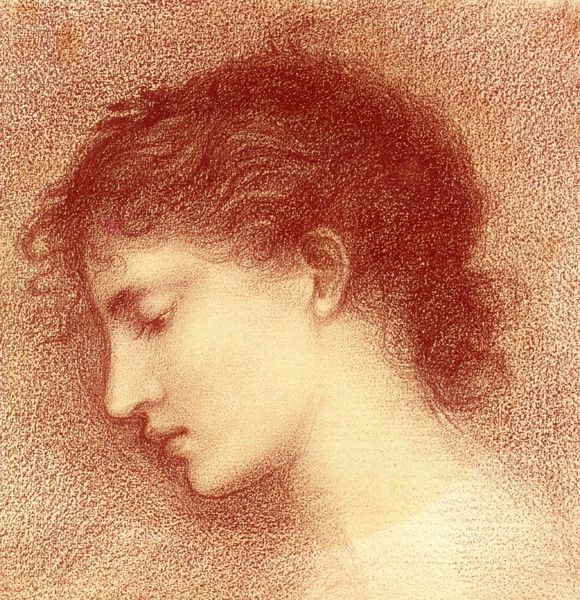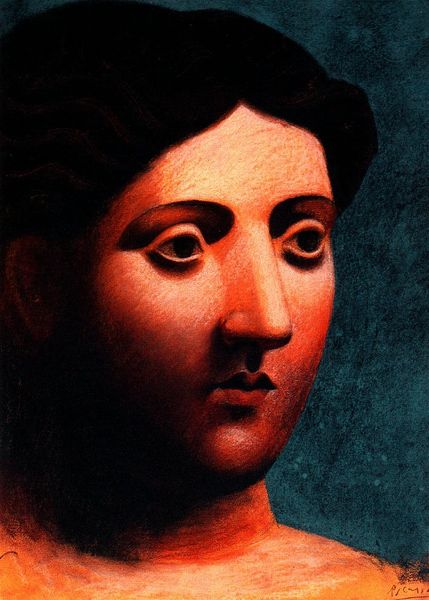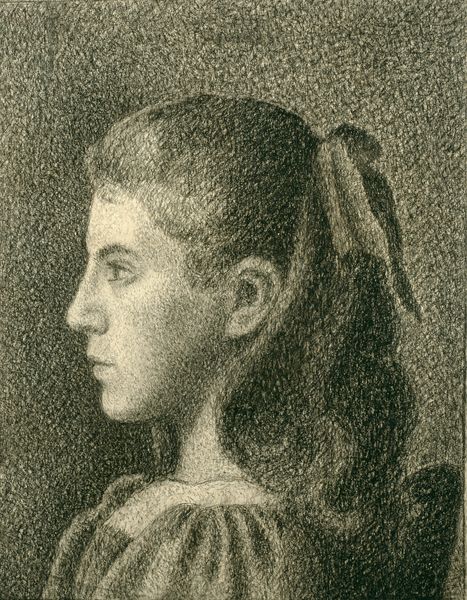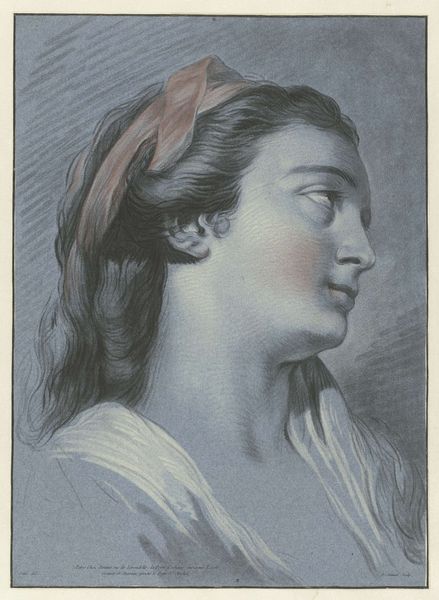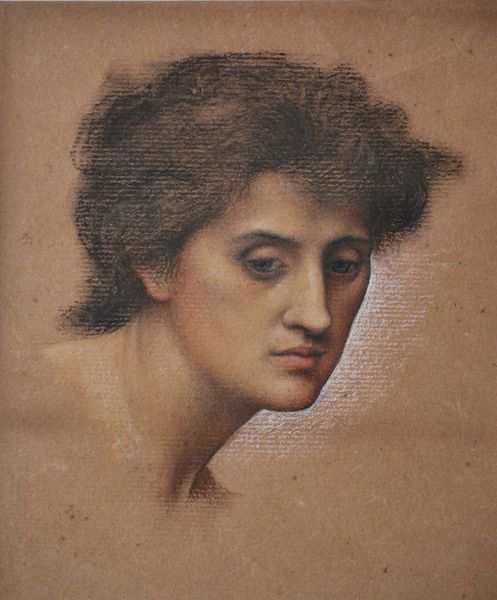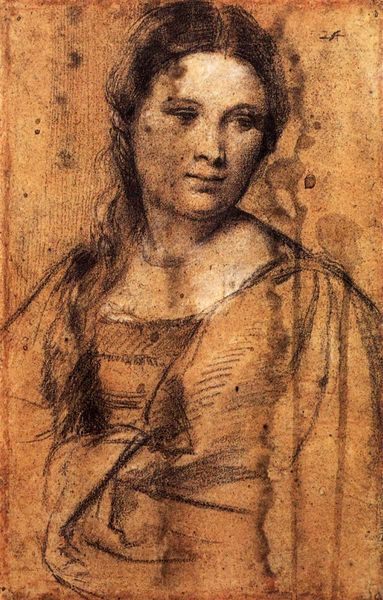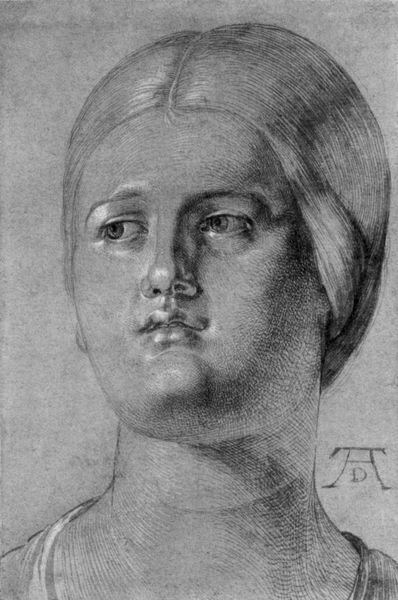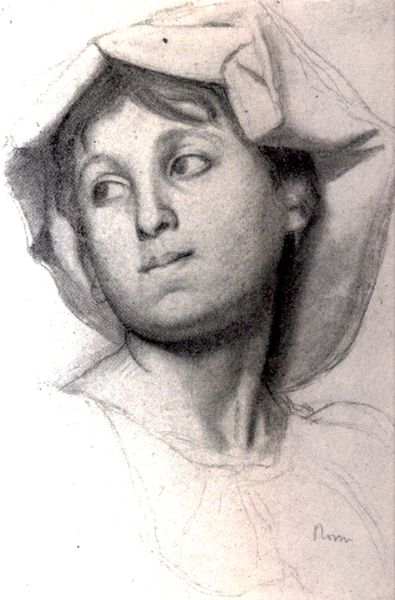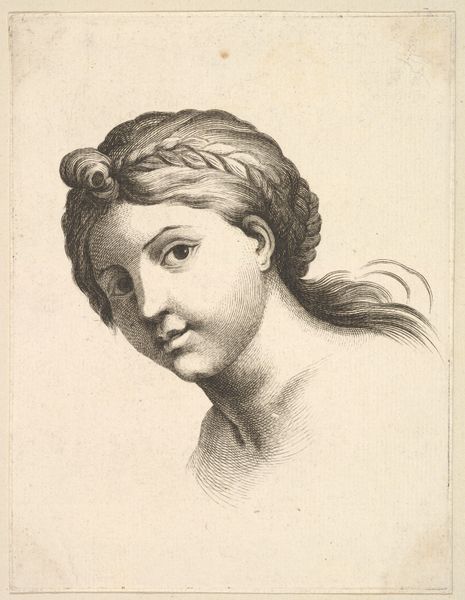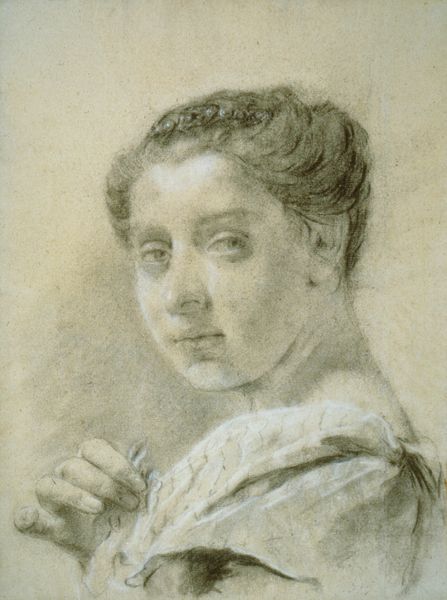
drawing
#
portrait
#
drawing
#
cubism
#
facial expression drawing
#
head
#
face
#
portrait reference
#
portrait head and shoulder
#
sketch
#
animal drawing portrait
#
nose
#
portrait drawing
#
facial study
#
facial portrait
#
portrait art
#
female-portraits
#
fine art portrait
#
digital portrait
Dimensions: 63.5 x 47.8 cm
Copyright: Public domain US
Curator: This striking image is Pablo Picasso's "Head of Woman," a drawing created in 1921. Editor: It has this quiet, contemplative air. The limited color palette gives it an almost antique feel, a very intimate sensation. Curator: Definitely. There's a graceful interplay of line and shadow, typical of Picasso's style at this time, even within the framework of cubism he evokes a more classical, renaissance feel, but through the means of drawing, a common working-class form of artistic production. Editor: It makes me think about the tools Picasso had at his disposal, not just his skill. Look at the paper – probably mass-produced, affordable. Then the chalk, chosen for its accessibility, maybe even recycled remnants. It shifts my understanding away from the individual genius narrative towards the means through which creative expression happens in general. Curator: An intriguing point. Beyond its physical existence, I can’t help but consider the cultural memory associated with female portraits through the centuries. She doesn't simply exist as a drawing; she’s a vessel carrying the weight of representation, a symbolic lineage. I would go as far as suggesting that with a closer look, there are certain elements that might imply sadness, too. Editor: Sadness maybe, but it doesn't strike me immediately as an overt emotion, especially given it's an everyday medium portraying an apparently normal figure. Isn't this everydayness actually something of great artistic import in itself, disrupting classical ideas and hierarchies? Instead of valorizing traditional painting or sculpture. It's this shift in emphasis and in medium that speaks loudest to me here. Curator: A potent reminder of how social context profoundly shapes what we see and how we come to perceive the emotional layers within the work, and within us, when we see this head of a woman, who, I believe we may never truly get to know, or understand. Editor: Ultimately, it all comes back to how material realities intertwine with artistic expression. Thank you, as always.
Comments
No comments
Be the first to comment and join the conversation on the ultimate creative platform.
